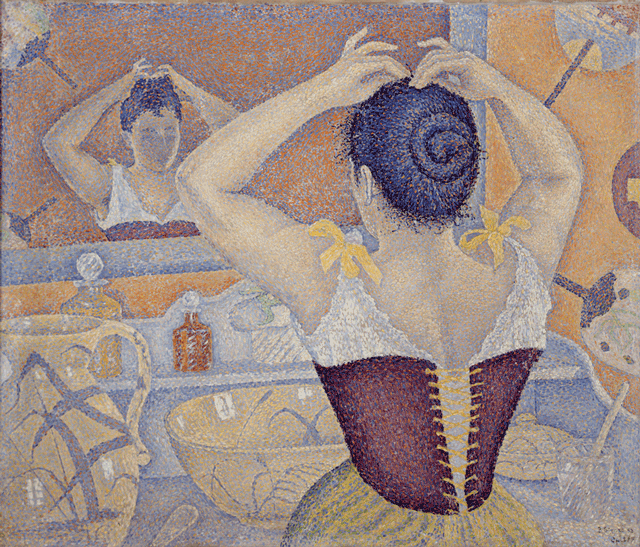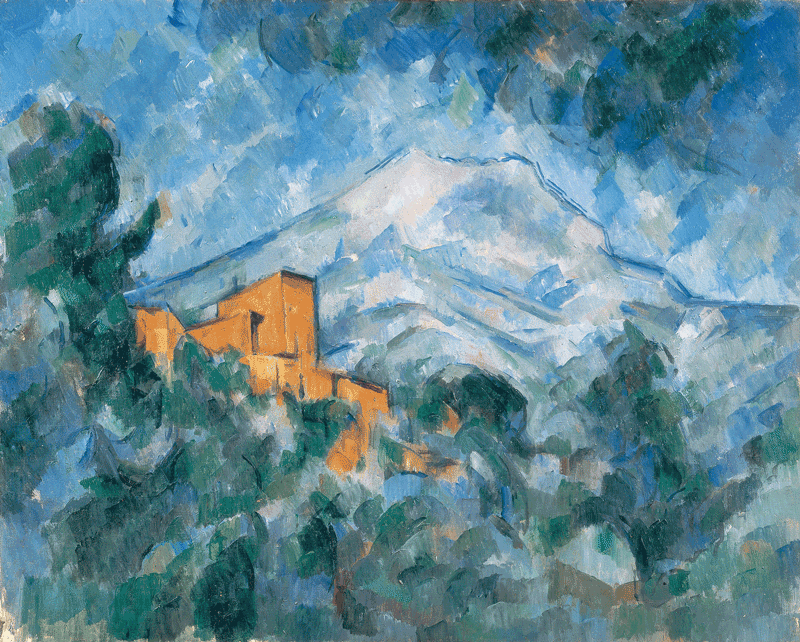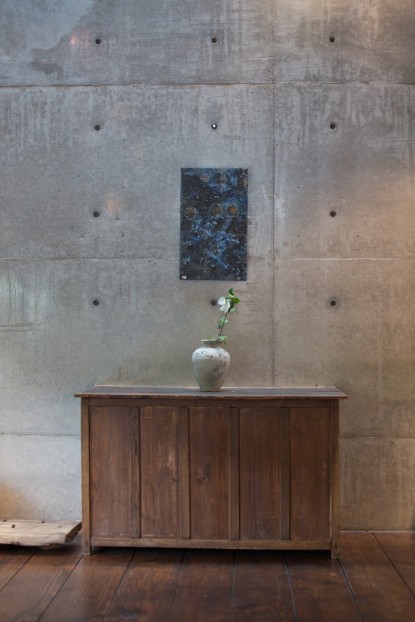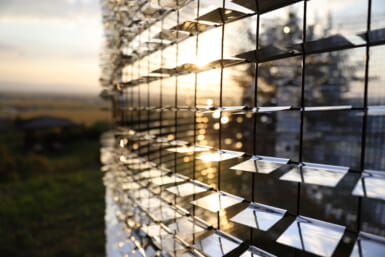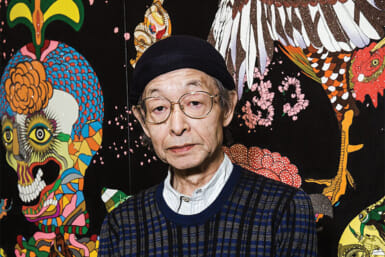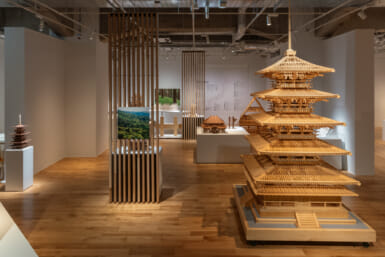This month we look at three major exhibitions featuring a variety of well-known artists and master works, as well as a two-day group exhibition at a local gallery, representing the combined efforts of various Japanese artists. February is all about interesting collaborations and impeccable collections. A bit of everything, and the best of the best.
By Sarah Custen
Neo-Impressionism, from Light to Color
As their names would suggest, Neo-Impressionists are interested in light, color and modern life, and much like their predecessors—the Impressionists—they tried to find a different, modern way to convey this. However, unlike Monet and his contemporaries, the “neos” (as exhibition supervisor Marina FerrettiBocquillon lovingly terms them) sought to find “new, permanent rules for harmony and beauty.”
Neos looked to science, particularly Eugene Chevreul and Charles Henry’s theories about color, in order to empower and enliven their work. A well-known example of this is Georges Seurat’s “pointillism,” which uses small dots of pure color to create an optical illusion of blended colors, when seen from afar. Ultimately, the neos “hoped to reach a more radical, equilibrated aesthetic,” explained FerrettiBocquillon.
This exhibition highlights the first phase of Neo-Impressionism, from 1886 to 1891, guided by Seurat, who then passed the mantle to Paul Signac, through to Henri Matisse and Andre Derain, who used Neo-Impressionism as a jumping off point for finding their own way. “We tried to show very precisely how the movement evolved, step by step, with a very fast and large diffusion in France, Belgium, and the Netherlands” she said. “From Impressionism to 20th Century painting…from great international museums to private collections…from Japan, Europe, the United States and Australia,” she added, “each painting is significant here.”
Tokyo Metropolitan Art Museum
Dates: January 24–March 29, 2015
Open: 9:30–17:30, Fridays until 20:00, closed Mondays
Web: www.tobikan.jp/en/exhibition/h26_neoimpressionism.html
Musée du Louvre: Genre Painting – Scenes from Daily Life
Peinture de genre, or genre painting, emerged from the decline of religious and historical painting in the 19th century, breathing new life into a stagnant artistic culture that had heretofore idealized landscape, portraiture, still life, and above all religion and history. Genre painting celebrates the beautiful mess of daily life with vivid color and palpable movement.
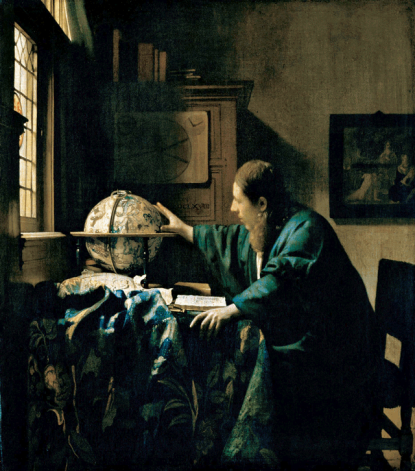
Johannes Vermeer (The Astronomer) 1668 oil on canvas
51×45 cm Photo © RMN-Grand Palais (musée du Louvre) /
René-Gabriel Ojéda / distributed by AMF–DNPartcom
Divided into eight thematic sections, this exhibition features more than 80 works culled from the Louvre’s incredible collection of genre paintings, which spans four centuries, from the Renaissance to the mid-19th century, and nearly every region of Europe. Prominent artists include Rembrandt, Millet, Tiziano and Vermeer, whose famous painting, “The Astronomer,” will be shown for the first time in Japan.
Curator Ayako Miyajima sees genre painting as particularly palatable for those unfamiliar with Western history and art. “Religious paintings and mythological paintings…are hard to approach, because you need to understand the background story,” she explained. However, genre painting deals with common themes of daily life, which allows for “feelings of closeness,” according to Miyajima.
While Bridgestone’s “Best of the Best” has a 19th century French focus, and Tokyo Met’s “Neo-Impressionism” exhibition features works from the late 19th and early 20th centuries, Genre Painting—Scenes from Daily Life covers earlier works, “mainly old master paintings of the Renaissance through the first half of the 19th century,” explained Miyajima, suggesting, “It might be interesting to visit our exhibition first, so that you can understand the full breadth of Western Art.”
The National Art Center, Tokyo
Dates: February 21–June 1, 2015
Open: Open 10:00–18:00, some Fridays until 20:00, closed Tuesdays
Web: www.ntv.co.jp/louvre2015/english/
Best of the Best
The Bridgestone Museum of Art will close its doors on May 18, 2015, undergoing several years of large-scale renovations in order to reopen, bigger and better, in time for the 2020 Tokyo Olympics. “Best of the Best” celebrates the museum’s growth from the small personal collection of founder Ishibashi Shojiro to a world-class assemblage of nearly 2,500 works.
In order to go out with a bang, curators have chosen 160 pieces that “trace the history of modern art in Europe through representative works by individual painters such as Manet, Cezanne, Monet, Renoir, Gaugin, Matisse and Picasso,” according to Tsuyoshi Kaizuka, senior chief curator. The exhibition further explores modern European art’s influence on Japanese oil paintings as well as post-war art in France and the U.S.
All of this is meant to highlight Bridgestone’s efforts to “flourish the collection,” said Kaizuka, adding that “the collection demonstrates Japanese people’s love for and taste in fine art.” Now is your chance to experience “The Best of the Best,” before it becomes even better.
Bridgestone Museum of Art
Dates: January 31–May 17, 2015
Open: 10:00–18:00, Fri. until 20:00, closed Mon. (exc. May 4)
Web: www.bridgestone-museum.gr.jp/en/exhibitions/
Gallery’s Eye
This unique and collaborative exhibition focuses on the particular points of view of 10 different Japanese galleries, selected by Takeaki Matsumoto, owner of “Utsuwa note” gallery in Kawagoe. Matsumoto wanted to give the galleries the opportunity to show “how they look at the Japanese crafts and art scene, and what makes them pick up artists to introduce in their gallery,” said PR representative Saiko Ena. “Each gallery selected only a few artists out of their usual lists to show and sell especially at this exhibition,” she explained.
Of the 10 galleries, some are local, and some come from outside Tokyo, but all are “well-known, sophisticated and knowledgeable,” said Ena. “Their word and perspective can influence the craft market and artists.”
The two-day exhibition takes place inside Kaikai Kiki gallery in Moto-Azabu, where the selected galleries—Toukyo, DEE’S HALL, gallery yamahon, Jikonka Tokyo, feel art zero, tokinokumo, Saruyama, Utsuwa Kaede, Utsuwa note, and Oz Zingaro—will set up pop-up booths, displaying and selling pottery, glass-ware, wood crafts (including urushi—Japanese traditional lacquerware), metal crafts, and other objects, pictures and sculptures produced by some 70 Japanese artists. “Some products are modern, some are traditional, some might be avant-garde,” said Ena.
Visitors are encouraged to touch the pieces, in order to “discover the beauty and warmth of hand-made products and natural materials,” said Ena, and some of the artists themselves will be present to meet and talk with the public. She added, “the most interesting part is finding the difference of each gallery’s eye through the pieces they bring to the exhibition.”
Kaikai Kiki Gallery
Dates: February 14–February 15, 2015
Open: 11:00–19:00
Web: en.gallery-kaikaikiki.com
Main Image: Paul Signac, Woman Doing Her Hair. Opus 227, 1892, Encaustic on canvas pasted on a backing (marouflage), Private Collection © Droit Reserve

